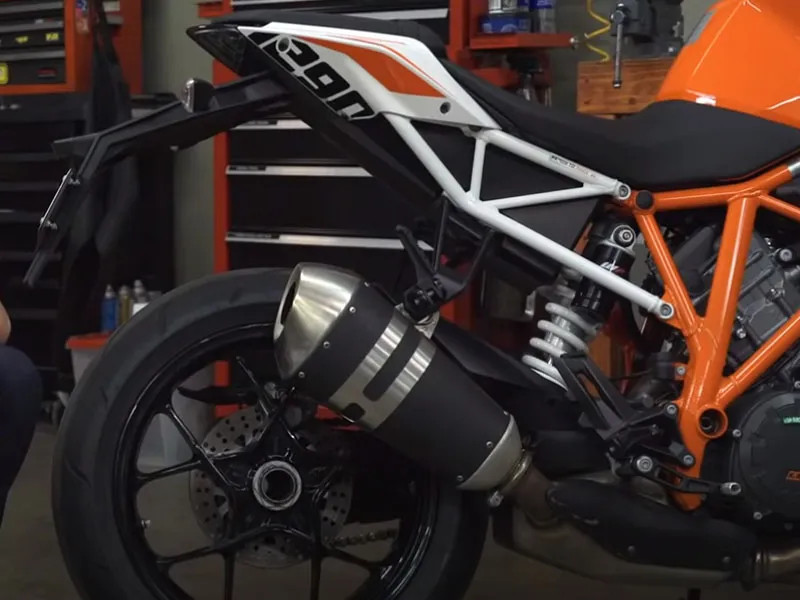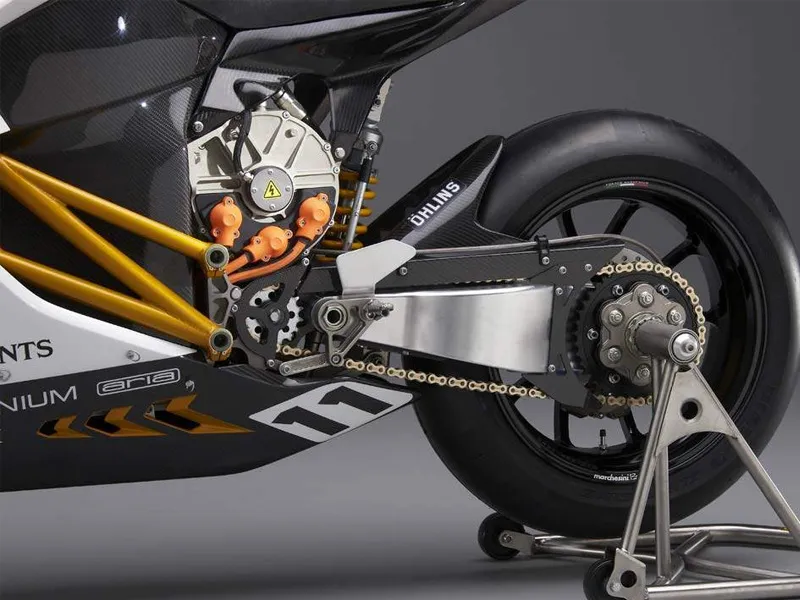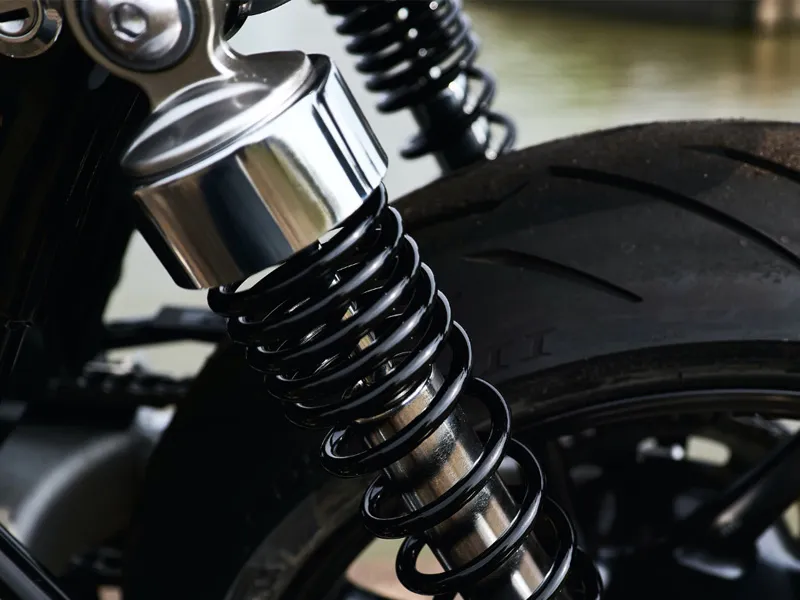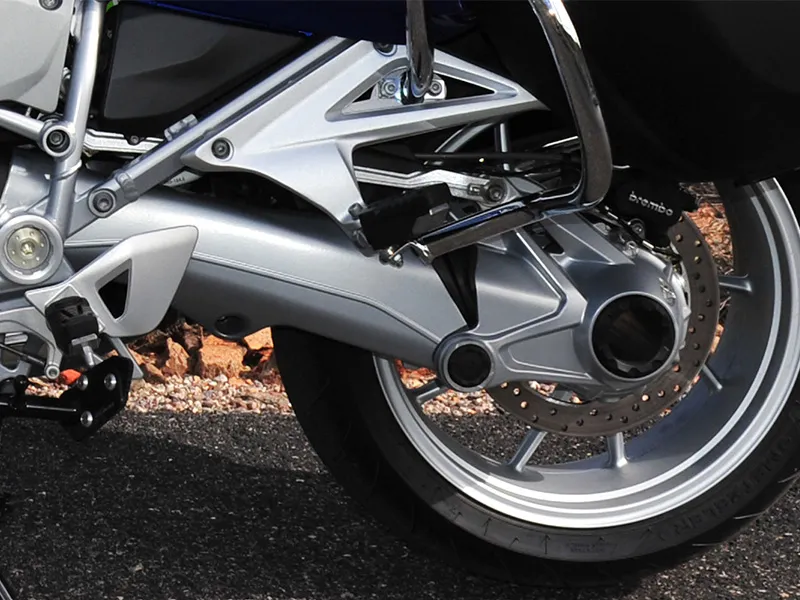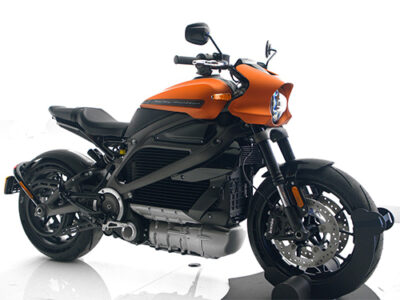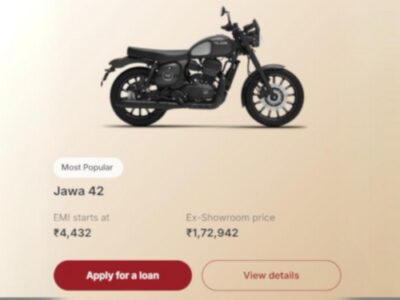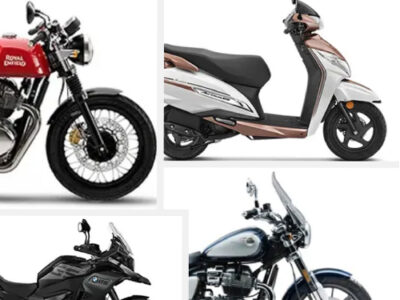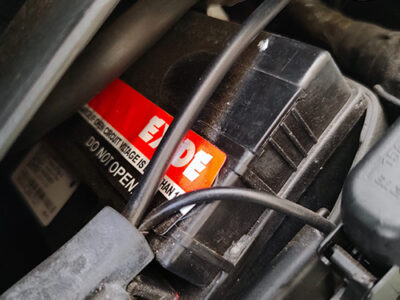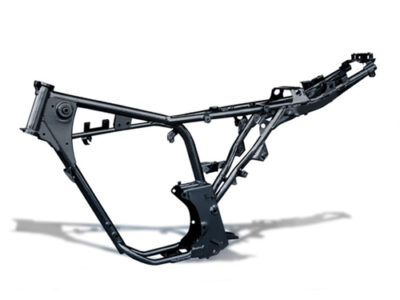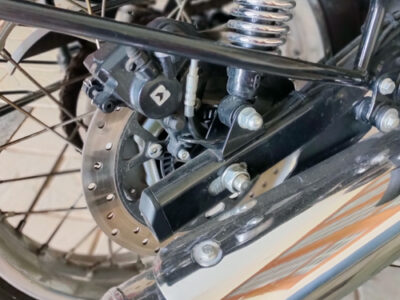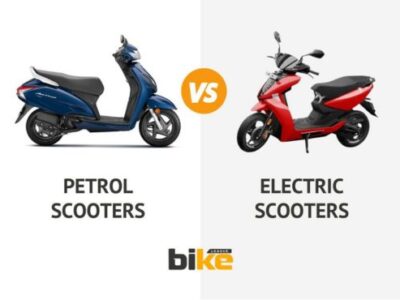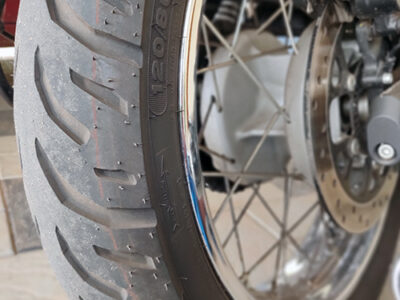
|
Getting your Trinity Audio player ready...
|
Long story short: The swingarm is a motorcycle’s main component, allowing the bike’s rear axle to fit. Explore the different types of motorcycle swingarms, from single-sided to dual-sided, for enhanced performance and style.
Key Takeaways
- The swingarm is what connects the rear wheel to the frame, playing a key role in keeping your ride stable and smooth
- The different types of motorcycle swingarms include Conventional, Single-Sided, Twin-Spar, Box-Section, Rising Rate Linkage, Single-Shock, Dual-Shock and Extended Swingarms
- The choice of material in motorcycle swingarms affects weight, rigidity, durability, and handling, shaping the overall performance and riding experience.
What is a motorcycle swingarm?
A motorcycle swing arm is vital for the rear suspension system. It extends backwards from the main frame and secures the rear wheel. The motorcycle swing arm pivots at one end, enabling the rear wheel to move up and down, which is crucial for the bike’s suspension and handling.
What does a motorcycle swingarm do?
Suspension Movement: The swingarm allows the rear wheel to move up and down, absorbing shocks and bumps from the road, providing a smoother and more comfortable ride for the rider.
Wheel Alignment: The swingarm ensures that the rear wheel stays aligned with the front wheel and the motorcycle’s frame, which is crucial for stability and handling.
Tyre Traction: It maintains constant contact between the rear tyre and the road surface, optimizing traction and control, especially during acceleration and braking.
Drive System Integration: In many motorcycles, the swingarm also houses and supports the drive system’s components, such as the chain or belt drive, rear sprocket, and rear brake.
What is the difference between motorcycle suspension and motorcycle swingarm?
Motorcycle suspension refers to the entire system responsible for dampening shocks and vibrations from the road, including both the front and rear components. On the other hand, the motorcycle swing arm is a specific structural component within the rear suspension system that holds and supports the rear wheel, allowing it to move vertically while maintaining alignment. To know more about different types of motorcycle suspension, check out this article.
Different types of motorcycle swingarm
There are various types and designs of motorcycle swingarms, each with advantages and applications. The swingarm is a crucial component of a motorcycle’s rear suspension system. It plays a significant role in determining the bike’s handling characteristics. Here are the different types of motorcycle swingarm.
1. Conventional
The most common type of swingarm on motorcycles is the conventional swingarm. It consists of a single-sided, straight arm that pivots at the motorcycle’s frame and supports the rear wheel. The swingarm is either steel or aluminium and relatively simple in design.
Pros
- Simplicity: Conventional swingarms are straightforward in design and maintenance.
- Cost-Effective: They are usually less expensive to manufacture and repair.
Cons
- Limited Suspension Travel: They may have limited suspension travel compared to more advanced designs.
- Less Rigidity: Conventional swingarms can be less rigid than other designs, affecting handling in high-performance situations.
2. Single-Sided
Single-sided swingarms are often seen on sportier and higher-end motorcycles. Instead of two arms on both sides of the wheel, there’s one on one side, allowing for easier wheel removal and maintenance. It gives the bike a sleek and distinctive look.
Pros
- Easy Wheel Maintenance: Single-sided swingarms make wheel removal and maintenance more accessible.
- Aesthetically Pleasing: They often give the motorcycle a unique and sleek appearance.
Cons
- Complexity: These motorcycle swingarms can be more complex and costly to manufacture and repair.
- Weight: They may be heavier than conventional swingarms, affecting overall bike weight.
3. Twin-Spar
Twin-spar swingarms are typically found on sport bikes. They consist of two parallel arms that run alongside the rear wheel, connecting to the frame on both sides. This design offers high rigidity, which can improve handling and stability, especially at high speeds.
Pros
- High Rigidity: Twin-spar swingarms offer excellent rigidity, enhancing handling and stability.
- Sporty Performance:They are commonly used in sports bikes for improved performance.
Cons
- Weight: They tend to be heavier than other swingarm types, which can affect agility.
4. Box-Section
Box-section swingarms have a rectangular or square-shaped cross-section. They are known for their strength and rigidity, making them popular for high-performance motorcycles and racing applications.
Pros
- Strength and Durability: Box-section swingarms are known for their strength and resilience.
- Stability: They contribute to the bike’s overall strength, particularly in high-stress situations.
Cons
- Weight: They can be heavier than other swingarm designs, affecting the bike’s weight distribution.
5. Swingarm with Rising Rate Linkage
Some motorcycles incorporate a rising-rate linkage system. This linkage changes the leverage ratio on the rear shock as the suspension compresses, allowing for better control over the bike’s suspension characteristics.
Pros
- Improved Suspension Control: These swingarms can better control the rear suspension’s characteristics.
- Customizable: The linkage system allows for fine-tuning suspension performance.
Cons
- Complexity: The linkage system can be more intricate, requiring precise adjustment and maintenance.
6. Single-Shock
This swingarm type features a single shock absorber mounted directly to the swingarm or frame. It is commonly used in cruiser-style motorcycles and provides a smoother and more comfortable ride.
Pros
- Comfort: They offer a smoother and more comfortable ride, particularly in cruiser-style motorcycles.
- Simplicity: Single-shock swingarms are generally more straightforward in design and maintenance.
Cons
- Limited Performance: They may not be suitable for high-performance or sport-oriented motorcycles.
7. Dual-Shock
Dual-shock swingarms have two shock absorbers, one on each side of the rear wheel. This design is often used on classic or vintage motorcycles and offers a more traditional look.
Pros
- Vintage Appeal: These swingarms give classic and vintage motorcycles an authentic look.
- Customization: They provide more options for customizing the bike’s appearance.
Cons
- Limited Performance: Dual-shock swingarms may not deliver the same level of performance as modern designs.
8. Paralever
BMW’s Paralever swingarm is a unique design incorporating a driveshaft, allowing for better control over the bike’s suspension geometry and eliminating the effects of shaft drive torque on the suspension.
Pros
- Improved Control: Paralever swingarms help maintain proper suspension geometry, even under torque.
- Shaft Drive: They are often used with shaft drive systems, reducing maintenance needs.
Cons
- Complexity: The Paralever system can be more complex and costly to manufacture and repair.
9. Single-Sided Cantilever
This design is commonly found on adventure and touring motorcycles. It combines the benefits of a single-sided swingarm with a cantilevered shock setup, which helps improve stability and load-bearing capabilities.
Pros
- Stability: This design provides added strength and load-bearing capabilities, making it ideal for touring and adventure bikes.
- Unique Look: It offers a distinctive appearance with the benefits of a single-sided swingarm.
Cons
- Complexity: Manufacturing and service can be more complex and challenging.
What is an extended motorcycle swing arm?
In motorcycle customization, an extended swingarm involves replacing the original swingarm with a longer one. This modification moves the rear wheel farther back from its original position, effectively extending the length of the swing arm. Extended swingarms are used to customize sportbikes and drag racing motorcycles.
Why extend the bike swingarm?
- Riders often extend the swingarm for its aesthetic impact, giving the motorcycle a unique and aggressive appearance associated with custom or “stretched” bike styles.
- Extending the swingarm improves straight-line stability, especially at high speeds, by increasing the motorcycle’s wheelbase.
- Longer swingarms can also provide better traction during acceleration by distributing weight more evenly between the front and rear wheels.
- Extended swingarms are often used in custom bike-building projects, allowing riders to create personalized, one-of-a-kind motorcycles that reflect their unique style and preferences.
What are the disadvantages of the extended bike swingarm?
- Extending the swing arm can make the motorcycle harder to handle, especially in tight corners. The longer wheelbase reduces agility and manoeuvrability.
- If you prioritize cornering performance, an extended swingarm can make it harder to lean into corners and navigate twisty roads or tracks.
- Check local regulations before extending your motorcycle’s wheelbase. There may be restrictions on how much you can extend for use on public roads, so ensure your modifications comply with the law.
How does the material choice affect the performance of different swingarms in motorcycles?
The material choice for motorcycle swingarms significantly impacts their performance, affecting various aspects such as weight, rigidity, durability, and overall handling characteristics. In the context of the Indian motorcycle market, we can explore how different materials affect swingarm performance with specific model examples.
1. Aluminum Swingarms
Aluminum is the most prevalent material used for motorcycle swingarms due to its excellent balance of properties.
Performance Characteristics
- Lightweight: Reduces unsprung weight, improving suspension performance and overall bike responsiveness.
- High strength-to-weight ratio: Enhances handling and agility.
- Good corrosion resistance: Increases durability and longevity.
- Excellent rigidity: Aids in precise handling and stability during high-speed manoeuvres.
Example
The Kawasaki Ninja 1000SX features a highly rigid aluminium frame, which is likely complemented by an aluminium swingarm. This choice contributes to the bike’s agile handling and performance, making it suitable for sport and touring.
2. Steel Swingarms
While heavier than aluminium, steel offers its own advantages in swingarm construction.
Performance Characteristics
- High strength and durability: Provides excellent structural integrity.
- Cost-effective: More affordable than some advanced materials.
- Heavier: Can negatively impact handling due to increased unsprung weight.
Example
The Royal Enfield Classic 350, a popular model in India, is known for its classic design and robust build. Royal Enfield often uses steel in its construction, including the swingarm, to ensure durability and cost-effectiveness.
3. Carbon Fiber Swingarms
Carbon fibre is an advanced material used in high-performance applications due to its exceptional properties.
Performance Characteristics
- Extremely lightweight: Offers significant weight savings compared to metal alternatives.
- Superior stiffness-to-weight ratio: Enhances stability and responsiveness.
- High torsional and lateral stiffness: Contributes to better stability and cornering performance.
Example
Ducati 1098, which has been noted for using a carbon fibre swingarm in some of its high-performance variants, could indicate similar high-end models available to Indian enthusiasts.
Common Myths and Doubts Related to Different Types of Motorcycle Swingarm in India
1. Single-Sided Swingarms Offer Superior Handling
While single-sided swingarms are often seen on higher-end motorcycles and are advantageous for endurance racing due to fast wheel changes, they do not necessarily offer significant handling advantages over conventional swingarms. Their primary benefits include easier wheel removal, chain maintenance, and better mass centralization.
2. Extended Swingarms Are Only for Aesthetics
Extended swingarms are not just for aesthetics. They are primarily performance parts used in sportbike drag racing to improve off-the-line acceleration by better distributing the motorcycle’s weight and engine power. However, they have also become popular among enthusiasts for their unique look.
3. Are Single-Sided Swingarms More Expensive to Maintain?
Yes, single-sided swingarms are generally more expensive to manufacture and maintain due to their complex design and the need for specialized tools for wheel removal. This complexity can also make repairs more costly.
4. All Swingarms Are of the Same Material
Swingarms can be made from various materials, including aluminium, steel, and, in rare cases, carbon fibre. Aluminum is the most common material due to its balance of strength and weight. At the same time, steel is used for its durability. Carbon fibre is reserved for very high-end motorcycles due to its high cost.
5. Should I Upgrade my suspension If I change my swingarm?
Yes, it is advisable to consider upgrading your suspension if you change your motorcycle’s swing arm. The swingarm and suspension work together to provide optimal performance and handling, so changes to one component can affect the other.
6. Conventional Swingarms Are Outdated
Conventional swingarms are not outdated. They remain the most common type of swingarm on motorcycles due to their simplicity, cost-effectiveness, and ease of maintenance. They are suitable for many motorcycles, from budget models to high-performance bikes.
7. Do Longer Swingarms Always Improve Performance?
Longer swingarms can improve off-the-line acceleration by better distributing the motorcycle’s weight and engine power. However, they can also reduce the bike’s agility and make handling harder, especially in tight corners. The choice of swingarm length should depend on the rider’s specific needs and riding style.
8. Paralever Swingarms Are Only for BMW Motorcycles
While Paralever swingarms are commonly associated with BMW motorcycles, they are not exclusive to this brand. The Paralever design helps maintain proper suspension geometry under torque, making it beneficial for motorcycles using shaft drive systems.
9. Are Dual-Shock Swingarms Inferior to Modern Designs?
Dual-shock swingarms are not necessarily inferior; they offer a vintage appeal and are suitable for classic and vintage motorcycles. While they may not deliver the same level of performance as modern single-shock or rising-rate linkage designs, they provide more options for customizing the bike’s appearance and maintaining an authentic look.
10. All Swingarms Provide the Same Level of Stability
Different swingarm designs offer varying levels of stability. For example, twin-spar and box-section swingarms provide high rigidity and stability, making them suitable for high-performance scenarios. In contrast, single-sided swingarms may prioritize ease of maintenance and aesthetics over maximum stability.
Other related articles from Bikeleague India
- What is Motorcycle ABS? – Doubts, Queries and FAQ
- Different types of motorcycles explained
- Motorcycle riding style – How to choose your perfect bike
- Kawasaki Ninja H2R
- Ducati Multistrada V4 Rally
Conclusion
Throughout this article, we have discussed motorcycle swingarms, different types of motorcycle swingarms, and some questions related to bike swingarms. If you have any other doubts or queries, email us at bikeleague2017@gmail.com or share your doubts or opinions in the comments section below. We are always eager to help and assist you. Also, here are several social media platforms of Bikeleague India to raise your suspicions.

